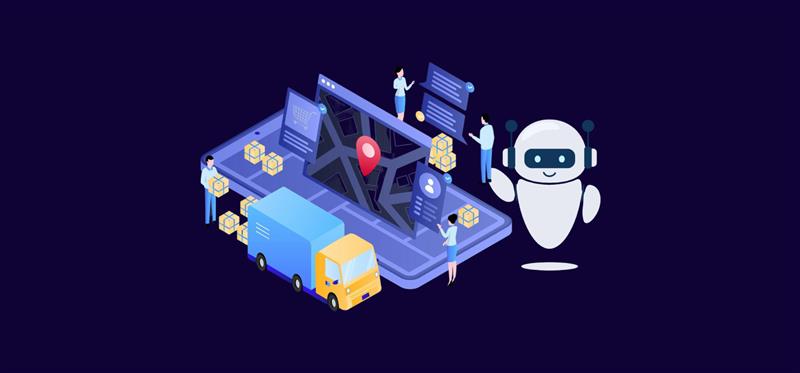5 Benefits of RPA in Transportation Management Systems
The global logistics industry is projected to reach USD 5,951.0 billion by 2030, growing at a CAGR of 7.2% from 2024 to 2030 (Grand View Research), and Robotic Process Automation (RPA) is playing a crucial role in optimizing operations within the transportation and logistics sector.
RPA uses software robots to automate repetitive, rule-based tasks, allowing human workers to focus on more strategic activities.
In this blog, we explore five key benefits of implementing RPA in transportation management systems, showing how it can help logistics companies stay competitive.
What are the top 5 Benefits of RPA in Transportation Management Systems?
1. Automated Shipment Scheduling and Tracking
RPA in the logistics industry can streamline the entire process of scheduling and tracking shipments. Software bots handle tasks like:
- Filling out shipping documents accurately.
- Selecting transport options based on predefined rules.
- Updating tracking systems with real-time data from GPS and IoT devices.
This automation reduces manual data entry, saving time and minimizing errors that could lead to delayed or misrouted shipments. Bots also monitor shipment statuses and alert stakeholders to delays, ensuring quick corrective actions.
2. Streamlined Invoice Processing
Manual invoice processing slows down logistics operations. RPA for logistics automates data extraction from invoices, validates information against purchase orders, and enters data into accounting systems. This speeds up payment cycles and reduces errors from manual entry.
By automating these tasks, companies improve cash flow and maintain stronger supplier relationships, making RPA in transportation a valuable tool for financial efficiency.
The global logistics automation market was valued at USD 34.56 billion in 2023 and is forecast to reach USD 90.00 billion by 2030, with a CAGR of 14.7% between 2024 and 2030 (Grand View Research).
3. Enhanced Compliance Management
The transportation and logistics industry faces strict regulations, and compliance can be resource-intensive. RPA in transportation automates the creation and submission of documents like customs declarations and safety reports, ensuring accuracy and timeliness.
This efficiency not only reduces costs but also strengthens a company’s reputation for reliability.
4. Improved Customer Service
Customer satisfaction is critical in logistics. Robotic process automation in logistics enhances customer service by providing real-time shipment updates and automating responses to inquiries. Bots can track shipments, send delay notifications, and provide accurate order information.
This automation ensures customers stay informed, leading to higher satisfaction. While specific statistics on customer satisfaction are limited, case studies show that real-time updates and faster query handling improve the overall customer experience, making RPA a key driver of loyalty in the logistics industry.
5. Optimized Resource Allocation
RPA, especially when paired with AI, analyzes data to optimize resource allocation in transportation management. This includes:
- Planning efficient routes to reduce fuel costs.
- Improving vehicle utilization for better fleet management.
- Streamlining warehouse operations for faster order fulfillment.
Automated route and schedule optimization reduces fuel use, speeds up deliveries, and improves fleet performance, driving measurable productivity gains.
In 2023, Logistics accounted for about 20% of RPA market share, with logistics being the fastest‑growing application segment projected to grow at a CAGR of 18% (Verified Market Reports, 2025).
Conclusion
RPA offers transformative benefits for transportation management systems, from automating shipment scheduling and tracking to streamlining invoice processing, ensuring compliance, improving customer service, and optimizing resources. With the right RPA strategy, logistics companies can accelerate operations, minimize overhead, and better adapt to industry shifts in 2025 and beyond.
Curious how automation can eliminate hours of manual effort from your TMS? Let’s discuss how others in the industry are doing it and how you can, too.
FAQs
What is Robotic Process Automation (RPA)?
RPA uses software robots to automate repetitive, rule-based tasks, mimicking human actions to interact with digital systems.
How does RPA differ from traditional automation?
Unlike traditional automation, which often requires custom coding, RPA bots work with existing systems without needing major changes.
What are the initial costs of implementing RPA in logistics?
Costs vary based on process complexity and bot requirements, but many companies see a return on investment within a year due to efficiency gains.
Can RPA integrate with existing transportation management systems?
Yes, RPA in the logistics industry is designed to work smoothly with current systems, requiring minimal infrastructure changes.
What are the challenges of implementing RPA?
Challenges include choosing the right processes to automate, ensuring data security, and managing organizational change, but proper planning can address these.

 contact
contact

 By
By 


